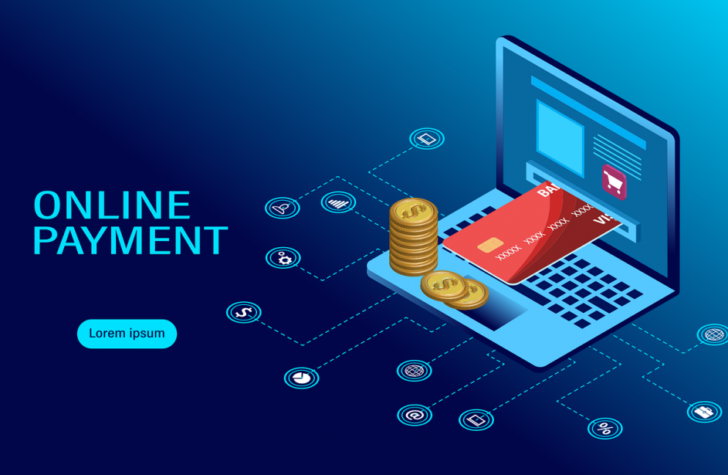E-commerce: Efficiency, Convenience, and Evolution

Introduction to E-commerce
E-commerce, short for electronic commerce, refers to the buying and selling of goods or services over the internet. It has revolutionized the way businesses operate and consumers shop, offering convenience, efficiency, and a global marketplace at the click of a button. This article aims to provide a comprehensive understanding of e-commerce, catering to individuals and businesses alike who are interested in exploring this dynamic industry.
Understanding E-commerce

To grasp the intricacies of e-commerce, it is essential to comprehend its various components. E-commerce encompasses online retail stores, online marketplaces, B2B (business-to-business) transactions, and even online auctions. The growth of e-commerce has been fueled by widespread internet access, technological advancements, and changing consumer preferences.
Key Elements of E-commerce:
1. Online Retail Stores:
These are web-based platforms that allow businesses to directly sell products or services to consumers. Online retail stores offer a wide range of products, competitive pricing, and the convenience of browsing and purchasing from the comfort of one’s own home. They also provide detailed product information, customer reviews, and secure payment gateways.
2. Online Marketplaces:
Online marketplaces are virtual platforms that connect buyers and sellers from around the globe. Examples include Amazon, eBay, and Alibaba. These platforms bring together a vast array of products and sellers, expanding consumer choices and enabling small businesses to reach a broader customer base. Online marketplaces provide a secure environment for transactions and often include features such as customer ratings and reviews.
3. B2B E-commerce:
In B2B e-commerce, businesses engage in online transactions with other businesses. This includes procurement, purchasing raw materials, and selling products/services to other companies. B2B e-commerce streamlines the procurement process, enhances supply chain management, and promotes cost savings through automation and bulk ordering.
Historical Evolution of E-commerce
E-commerce has come a long way since its humble beginnings in the 1960s. Let’s take a journey through time to understand how it has evolved:
1. Emergence and Development:
In the 1960s, electronic data interchange (EDI) laid the foundation for e-commerce. Businesses began exchanging documents electronically, streamlining processes and reducing paperwork. However, EDI was limited to large corporations due to complex technical requirements.
2. The Internet Revolution:
The advent of the internet in the 1990s brought about a revolution in e-commerce. Online shopping became a reality as companies like Amazon and eBay emerged. The proliferation of personal computers and the World Wide Web enabled consumers to browse and buy products online, marking the beginning of the e-commerce boom.
3. Mobile Commerce and Social Commerce:
The rise of smartphones and mobile internet connectivity further transformed e-commerce. With the introduction of mobile apps, consumers could shop anywhere, anytime. Social media platforms like Facebook and Instagram integrated shopping features, allowing businesses to showcase their products and reach a wider audience.
4. Emerging Technologies:
Technological advancements continue to shape the e-commerce landscape. Artificial intelligence, machine learning, and virtual reality have revolutionized the customer experience. Personalized product recommendations, chatbots, and immersive virtual try-on experiences have become commonplace, enhancing customer satisfaction and engagement.
Benefiting from E-commerce
E-commerce offers immense benefits for both individuals and businesses. Let’s explore some of these advantages:
1. Convenience:
E-commerce eliminates the need for physical store visits, enabling consumers to shop 24/7 from any location. It offers a wide selection of products, easy navigation, and hassle-free transactions. Consumers can also compare prices, read reviews, and make informed decisions before purchasing.
2. Global Reac
Unlike traditional brick-and-mortar stores, e-commerce provides a global marketplace. Businesses can expand their customer base beyond geographical limitations and tap into new markets. This opens up opportunities for growth, increased revenue, and strategic partnerships.
3. Cost Savings:
E-commerce reduces operational costs associated with maintaining physical stores. Businesses save on rent, utilities, and staffing, enabling them to offer competitive pricing. Additionally, online advertising and digital marketing campaigns tend to be more cost-effective than traditional advertising methods.
4. Data-Driven Insights:
E-commerce platforms generate vast amounts of consumer data. Businesses can leverage this data to gain insights into customer preferences, behavior, and trends. This information can guide marketing strategies, product development, and more personalized customer experiences.
Conclusion
E-commerce has transformed the retail landscape, offering individuals and businesses unparalleled convenience and efficiency. From online retail stores to international marketplaces, e-commerce has evolved dramatically over the years. Technological advancements and changing consumer preferences continue to shape its trajectory. With the affluent benefits it offers, e-commerce is poised to grow exponentially in the years to come. Embracing this digital revolution will enable businesses to thrive in an increasingly interconnected world.

















